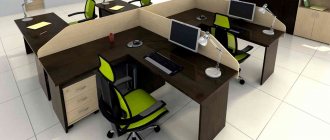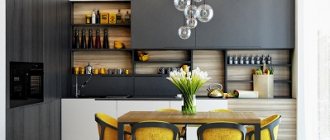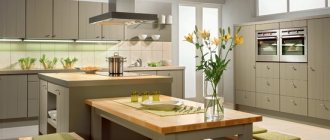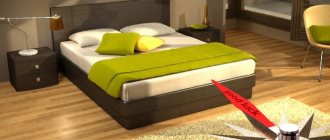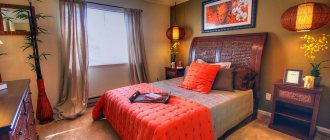Before you buy or build a fireplace, you need to decide on its location. In fact, a fireplace can be located in almost any part of the house, as long as all fire safety standards are met. However, there are a number of factors that may affect its location:
- fireplace design features
- room area
- air exchange conditions
- room design
If the location you choose meets all of the above factors, then you can safely begin building a fireplace. But before that, we invite you to find out where a fireplace is most often installed and why. Perhaps this information will help you make the right decision.
Living room
Perhaps the most popular and win-win place to install a fireplace. After all, it is in this room that all your family and friends gather when they come to visit you. Imagine their delighted faces when they see the big, beautiful fireplace. It will become a real center of attraction for the whole family. The main thing is to correctly design the relaxation area near the fireplace. So that you can enjoy the warmth and beauty of the product as often as possible. You can install both island and wall-mounted fireplaces in the living room. For those who have a combined kitchen and living room, a wall-mounted fireplace is suitable. It can be angular or front. Both options look great in this layout.
According to feng shui
According to Feng Shui, the fireplace is located on the south side.
The fireplace is designed to create the most important element of the Universe in the house - fire. It is he who, in accordance with the ancient Japanese practice of Feng Shui, forms the strongest flows of thermal energy - Qi. Therefore, it is necessary to position the fireplace so that the energy freely fills all the space in the house. Qi should not accumulate and evaporate. Its purpose is to fill living rooms with warmth, while creating a comfortable and cozy atmosphere.
For the ideal distribution of energy, according to the ancient Japanese teachings of Feng Shui, in the process of thinking through the design of a fireplace design, certain principles must be observed.
- The fireplace should be placed in an unfavorable place (the negative zone is a corner), and the firebox door should be directed to a favorable place.
- The ideal place to install the structure is the south side of the room. According to Feng Shui, the “fire” must be allocated to the southern zone of the living space. The best option is a corner on the south side of the living space.
- You should not direct the fireplace insert outside the building, especially in the direction of the entrance doorway. This will cause energy leakage to the street.
- The structure in the house should be located at a sufficient distance from water communications. According to the ancient teachings of Feng Shui, water and fire are “neighbors” in a destructive cycle. This can negatively affect both constituent elements and provoke negative consequences.
- You should not place the fireplace insert in the sleeping area.
- In accordance with the practice of Feng Shui, the fireplace should be free of corners, especially those that protrude into the living space.
- When thinking about the placement of furniture, it is important that mirror surfaces are not directed towards the fireplace structure. According to Feng Shui, this will cause energy to be reflected back into the fireplace.
Experts say that a fireplace can heal. Contemplation of fire copes with neuroses, calms and pacifies. Near it, the human body is filled with natural energy, and fatigue recedes. Being close to the fireplace encourages focused thinking and making informed decisions. [ads-pc-2][ads-mob-2]
Corridor
If you like wood-burning fireplaces with an open firebox, then the hallway is definitely not the place where you can install this option. Even if it is quite wide and spacious, the following disadvantages will still be encountered: back draft due to constant drafts, difficulties in lighting the fireplace and inconvenient location around the building. But if you can only place a fireplace in the hallway, then we have a solution. You can install the product with a firebox, which will be closed with a special door. It will help avoid unwanted emissions of smoke into the room.
Firebox selection
If you decide to use a metal firebox, then the chimney pipe must be selected according to the diameter of the pipe already on it.
Easy to install ready-made firebox
In specialized stores today you can purchase a firebox of any configuration - open and closed, through and one-sided, as well as with a built-in heat exchanger for the water circuit. Its design can be clearly seen in the diagram, where a similar firebox is shown in section.
Fireplace insert with built-in heat exchanger
The traditional brick firebox is lined with white fireclay bricks placed on the end side. It is heat-resistant, so it can easily withstand high temperatures. This work requires extreme care, since the surfaces of the fireplace must be as smooth as possible. Therefore, the process of its installation will take quite a lot of time. If you have no experience in the art of bricklaying, then it is better to choose a ready-made metal firebox. It will fit perfectly into the modern interior of rooms.
Attic
Increasingly, fireplaces are being installed in attic rooms, although previously this seemed unrealistic. Nowadays it is considered common practice to place the fireplace under the very roof of the building. However, to do this, it is necessary that the premises meet the following criteria:
- The area of the room must be no less than 15 square meters
- The chimney must be no lower than 4.5 meters
- The ceiling must be strong so that it can support the weight of the fireplace.
If the walls in your attic are not high, then it is better to place the product in the center of the room, where the height of the room is maximum, but this is not necessary. The main thing is to focus on the layout of the room. A fireplace in the attic not only creates a cozy atmosphere, but also serves as an excellent source of additional heating.
Building design
A fireplace of any type is based on one design and consists of four sections:
- firebox;
- a smoke collector located above the firebox and serving as a guide for smoke coming from the firebox into the chimney;
- smoke exhaust duct;
- a niche for storing firewood or a blower hole if the firebox is supposed to be closed.
Another important part is the decorative finishing of the façade of the building, including the portal around the firebox. The design does not in any way affect the functionality of the building, however, a well-functioning, but sloppy and ugly fireplace will spoil the appearance of the entire interior. Therefore, you need to pay special attention to the exterior decoration of the building.
In addition, the fireplace can include an air or water heating system in its design. That is, heat exchangers are built into the fireplace and connected to the heating circuit. Such models can easily heat one or two rooms. In order for the heat transfer to be higher, it is best in this case to arrange a closed firebox so that the heat is not wasted.
Typical fireplace layouts
In the diagrams presented, you can clearly see the internal structure of fireplaces in order to be guided by them when laying.
Under the stairs
We strongly do not recommend installing a fireplace on or under the stairs, since there are a lot of disadvantages in such a location. Firstly, it is not entirely safe. Warm air coming from the fireplace rises, heating the stairs, which can lead to unpleasant consequences. Secondly, the proximity of the fireplace to the stairs can lead to an unwanted draft, which very often causes back draft. Therefore, installing a wood-burning fireplace under the stairs is highly undesirable.
What about TV?
The combination of a fireplace and modern electronics is a seemingly rather controversial issue, because things are practically from different eras. Ideally, the interior of a living room with a fireplace should be planned without a TV. But if this is not possible, then the optimal solution would be to place these items on the same line.
An excellent solution is a corner fireplace, on the side of which you can place an armchair and enjoy the warmth without being distracted from your favorite movies.
Do not hang the TV on the wall opposite the fireplace. The glare created by fire interferes with viewing, and the heat emitted harms electronics.
The wall above the fireplace is also not the best place for a TV. Firstly, safety regulations are violated. Secondly, both of these items attract attention to themselves, overloading the interior of the room and damaging the overall design of the living room.
Modern living room design with fireplace
Living room interior design with fireplace
Bathroom
One of the most unusual places to install a fireplace. However, in America and Europe this has been practiced for a long time. If you also like the look of a fireplace in the bathroom, then you should learn about all the pros and cons of such a location.
Let's start with the fact that a wood-burning fireplace is definitely not suitable for installation in a bathroom. This is one of the few places where the product simply does not have enough fresh air. Because of this, the fireplace becomes capricious and does not burn properly. If the fireplace insert is closed with a glass door, then the bathroom is most likely to burst or crack. Because one drop of water is enough for heated glass to crack. Although technology is moving forward and water-resistant glass already exists. However, this is another story, which only specialists will help you understand.
Therefore, a fireplace in a bathroom can only be used as a decorative element. It looks incredibly beautiful and romantic. Well, if you want at least some fire to burn, then place a candlestick with candles in the niche for igniting wood. This will help you move from your home to some beautiful, ancient castle.
The most beautiful. Design decision.
Over many centuries, during which fireplaces have gone from being a functional element of the kitchen to decorating a home, a huge number of design options have accumulated. It depends both on the technological parameters (fuel, installation location, location of the chimney), and on the desires of the owners and the design of the room.
The four most popular fireplace design styles look like this: classic architectural, country, modern and high-tech.
Classic architectural style.
Its basis is strict lines and harmonious proportions. The portal is designed in the shape of the letter “P”, it is decorated with antique columns, bas-reliefs, stucco molding or carved panels.
Preference is given to artificial or natural stone, especially marble, and wood is also used.
Country.
This is a style a la a simple and comfortable farmer's house, it is suitable for cottages and country houses, decorated with wood on the inside. Characteristic features of fireplaces made in this style:
- D-shaped portal (this shape is formed due to the high stone base);
- massive wooden shelf.
Preference is given to materials that are easy to process: porous stones, brick and, of course, wood, which gives a feeling of simplicity and comfort.
Modern.
This style is characterized by simple forms with a minimum number of elements. Fireplaces in this style can be made in different sizes, even small ones, and placed anywhere, which is very convenient for placement in modern housing.
The design range of such fireplaces is also very wide: from marble cladding to innovative materials.
Hi-tech or high technology style.
This style seeks to incorporate the latest advances in technology and express a sense of the future being embodied. When creating fireplaces of this style, fire-resistant materials are used, produced using the latest scientific technologies. This gives scope for creating fireplaces of various shapes and sizes, from simple strict lines with sharp corners to an absolutely futuristic appearance.
The high-tech style is most characteristic of electric fireplaces and biofireplaces, since they are made of tempered glass and heat-resistant metals - those materials that are most characteristic of this style.
A properly selected fireplace fits so organically into the interior of the house that the mere thought that it won’t exist makes you feel uncomfortable. Considering the huge selection of fireplace design solutions and materials suitable for their implementation, there is no doubt that fitting a fireplace even into an ultra-modern environment is a feasible task. Therefore, if you decide that a playful flame will make your home more comfortable, feel free to take on the realization of your desire.
In the gazebo
A fireplace in a gazebo is quite common. If the house does not have the opportunity to build this structure, then a gazebo will be an excellent alternative. In addition, a fireplace can combine several different devices at once. For example, the design of the fireplace can be combined with a sink or cutting table. Often found together with a fireplace are barbecues and stoves. It's convenient and creative.
Chimney
As mentioned above, the chimney must have a certain size. If when installing a metal firebox it is known in advance, since the pipe already has the required diameter, then when erecting a brick one, you need to calculate its cross-section.
This is necessary so that there is good draft, but at the same time not excessive, so that the heat simply does not fly out into the chimney. The size of the chimney channel depends on the size of the fireplace and is usually 20x20 or 25x25 centimeters, with an average firebox size of 60x75 centimeters.
Mandatory thermal insulation of wooden walls...
A metal pipe is placed on the firebox nozzle. For fire safety, it must be separated by a heat-resistant layer from combustible wooden walls. This process is carried out before closing the chimney pipe with a decorative screen, which can be made of heat-resistant plasterboard attached to a metal profile. You can learn this process by watching the video below.
This photo shows a chimney pipe separated from a log wall and passing through the ceiling.
... and passages through the ceiling.
Next, you need to consider the passage of the pipe through the thickness of the ceiling. It is best to arrange a box around it, which will separate the pipe from the wooden parts at a distance of 15–20 centimeters, into which non-flammable material, for example, mineral wool or expanded clay, is placed. The top of the insulated box is closed with a metal passage, which can be purchased ready-made in a specialized store.
The head of the chimney, exiting through the roof, is well waterproofed - this can be done using various ready-made passages. They are made from a flexible material that easily takes the shape of the roof topography or, as in this case, from stainless metal. This passage is more suitable for roofs with shallow relief.
Roof passage waterproofing
An umbrella must be placed on top of the pipe to protect the chimney channel from dirt and precipitation from outside.
The design of the passages of a brick pipe is carried out in the same way as a metal one. Its masonry follows a separate order pattern.
Brick pipe passages through floors and roofs are much more difficult to make
This work is quite difficult to do; it is better to invite a master stove maker to do it. But it should be noted that a metal pipe can also be installed on a brick fireplace, which, if desired, can be covered with brickwork before it goes into the attic.
In the apartment
We considered all of the above fireplace locations using the example of a private house, but what if the product needs to be built in an apartment? Is it possible? In fact, building a wood-burning fireplace in an apartment is very difficult. By law, any solid fuel fireplace is allowed to be built only if you live on the top floor of the building, so that you can build a chimney. Although in modern multi-storey buildings you can build any fireplace. Apartments are built in such a way that there is an opportunity to create a separate chimney on any floor. Therefore, you have every chance to build a structure in an apartment.
The fireplace will look beautiful and appropriate in almost any room, it all depends on where exactly it will be placed. And in this matter you cannot do without the help of a specialist. Only a true professional will be able to choose the ideal place for a fireplace that will meet all fire safety standards.
Fill out the form below or request a call back and receive:
- Consultation when choosing a fireplace
- The cost of ready-made fireplaces on a turnkey basis
- Gift when ordering any fireplace
Send:
Fireplace placement
The first question that the customer asks when the master visits the site is “Where should I place the fireplace?” or “How to position the fireplace correctly?” In this regard, we are publishing a specially written article about the features of placing a fireplace.
The fireplace is always an integral part of the interior, with which - despite its dominant position - the fireplace should form a single functional and artistic whole. Therefore, the placement and appearance of the fireplace are an important part of the overall design of the room in which it is located. This circumstance is especially significant if the fireplace is part of a furniture complex (wall, bookcases, etc.).
As a rule, a fireplace is located in the living room or in a residential hall, with the possibility of combining it with a dining room (cooking over an open fire). The location of the fireplace between the windows allows you to also see the garden (landscape) when looking at the fire, at the same time it allows you to create a double outdoor fireplace, which can be an interesting and pleasant addition to the terrace.
Incorrect placement of the fireplace
The fireplace should be positioned so that a group of people sitting in front of the fireplace does not form a corridor to another room, since everyone passing by creates interference. Likewise, a door located near the fireplace and in the field of view of those sitting, greatly limits comfort, since it creates the feeling that it might open and let someone in, thereby arousing constant unconscious anxiety. The fireplace should also not be located in a protruding corner of the room, since this would leave the entire sitting group of people in the room unprotected. In addition, such an angle does not give the eye a place to rest, since the gaze constantly slides along the running away walls. It is important to position the fireplace in the room so that it is away from traffic.
In addition, it should be remembered that when determining the desired location for installing the fireplace, in addition to subjective factors (such as distance from the chair standing by the window overlooking the lake), objective factors that directly affect the operating efficiency and fire safety of the fireplace should be taken into account.
A fireplace located in the center of the room gives off heat more efficiently through the radiation (radiation) heat transfer mechanism, in addition, such a fireplace is easier to inspect and clean.
Placing a fireplace near an external wall creates the risk of condensation in the chimney with all the ensuing negative consequences. To prevent the possibility of condensation forming, additional thermal insulation should be provided in the chimney design, which will significantly affect the cost of the fireplace. However, placing the fireplace near an outside wall has a number of advantages. With this option, convection air flows in the fireplace room are distributed significantly more favorably: already heated air flows move along the floor to the outer wall, which significantly increases the comfort of the fireplace room, i.e. building a fireplace near the outer wall allows for more rational organization of air flows.
A fireplace located near the inner wall, as in the case of its location in the center of the room, is relatively easy to inspect and clean, and the chimney of such a fireplace does not require additional measures for thermal insulation of the chimney, however, placing the fireplace in this way causes the occurrence of reverse convective flows: in this case, along the floor Cold air will move from the windows, i.e. in a room where the fireplace is located against the inner wall, there will be a constant “blow on the legs”, which will naturally cause discomfort and contribute to the occurrence of colds. Also, placing a fireplace near the inner wall allows for the least reduction in the temperature of the flue gases passing through the chimney, so the draft in such a fireplace will, ceteris paribus, be better than that of a fireplace located near the outer wall), however, due to the complexity of placing channels in the inner walls, with this The location of the fireplace makes it difficult for fresh air to enter the fireplace room.
If you intend to build a fireplace-stove, then you should choose the golden mean: the fireplace is built in the center of the house so that the stove part goes into the kitchen or veranda, and the heat-emitting surfaces and the fireplace part go into the living rooms.
The design features of the roof and ceilings should also be taken into account. In any case, you should make sure that the fireplace/stove pipe goes outside next to the ridge. This increases its resistance to snow and wind, increases traction and simplifies the operation of the roof (reduces the likelihood of leaks in places where the pipe is embedded in the roof).
The position of the chimney passage through the roof and ceiling is chosen so as to eliminate the need to make changes to the design and to prevent a large displacement of the pipe in relation to the design location of the chimneys. In accordance with fire safety standards, there must be at least 25 cm from the chimney to structures made of combustible materials, while in the interfloor and attic floors this gap is filled with brick (cutting), laying a layer of asbestos cardboard or felt soaked in clay around its perimeter, and on the roof around pipes 13 cm to wooden structures must remain free. It should be remembered that the pipe can be shifted in the upper rows of the brickwork by 1...2 bricks away from the design position.
Due to the fact that the presence of drafts negatively affects the operation of fireplaces, they should not be located near door and window openings, in the corridor, and especially next to the stairs. The fireplace portal should face the center of the fireplace room in order to organize a resting place nearby. There should be no barriers between seated people and the fireplace.
The radiation surface of the fireplace should not be located opposite the window openings, for the reason that with this arrangement there is a significant increase in the intensity of air flows.
Various types of interior items, for example, tables, cabinets, animal skins, carpets, etc., doors and windows made of flammable materials, must be removed from the fireplace at a distance of at least 1 m, and from the fireplace wall - at a distance not less than 0.2 m.
The fireplace can only be installed in rooms with an area of at least 11...12 square meters. m (volume more than 30 cubic meters), having at least one opening or opening window, because a fireplace, especially an open type, emits large volumes of air from the room along with combustion products. For this reason, at the earliest possible stage, it is necessary to provide a channel for air to enter the room to replace the one that has left (inflow channel), otherwise in winter, for normal operation of the fireplace, you will have to open the window. The issue of air entering the fireplace is very relevant for houses built using so-called “plastic” windows and tight doors, i.e. in buildings where there are no leaks caused by building design defects, otherwise the conditions for the supply of sufficient oxygen for combustion of fuel will not be provided.
Structural elements made of combustible materials that are in contact with the fireplace structure must be separated from the latter by a solid partition with a ignition coefficient of more than 2.5. For thermal insulation, it is recommended to use slag or mineral wool. It is prohibited to build fireplaces on combustible surfaces (for example, wood).
If the type and type of future fireplace has not yet been chosen, and the time has come to lay a chimney, you can prepare a brick shaft for the wall (the choice of the cross-section of the fireplace chimney depends on the volume of the fireplace room, more about this here), or leave openings between the building structures, which will allow the construction of a chimney in a built house. A niche left in advance in a brick wall or an opening in a wooden one, which will subsequently be filled with masonry and will serve as a wall for leaning against the fireplace, can be very useful.
The fireplace does not have to be located in the room. It can be placed, for example, on the terrace, where you can wonderfully spend summer and spring evenings. The fireplace can also be located in the garden, in the gazebo or other non-standard places on the estate, which are a favorite resting place for your family members. In this case, the fireplace is called “street” or “garden”; You can read more about its execution options here. A significant negative quality of outdoor fireplaces is the fact that they cannot be used in the cold season, during thunderstorms and strong winds. For this reason, the location of the outdoor fireplace should be chosen correctly, taking into account the wind rose. A fireplace placed on the terrace can be built-in, attached or free-standing. In this case, the fireplace should be positioned so that those sitting next to it face primarily towards the outside space (towards the courtyard, garden, pond or just a beautiful landscape). Such a fireplace can be built into the outer wall of the house, facing the terrace, garden or yard.
The only restrictions on the installation locations of fireplaces can only be an increased fire danger or interference with the movement of people and vehicles. When constructing outdoor fireplaces, the wind factor must be taken into account. Wind blowing into the firebox changes its draft and can lead to smoke. Therefore, sometimes when constructing outdoor fireplaces it is often necessary to build protective walls. At the same time, the fireplace must fit harmoniously into the design of the room or into other surroundings.
Particular care should be taken when organizing a relaxation area by the fireplace. It should be equipped, of course, with lounge chairs and any other furniture elements, for example, a coffee table. If the space in front of the fireplace is small, the chairs can be replaced with banquettes that take up slightly less space. In some cases, a sofa or couch is placed in the recreation area. Wicker furniture will look most beautiful on the veranda by the fireplace, and garden furniture on the terrace.
Separately, you should consider lighting the seating area in front of the fireplace - it is better that the light comes from a floor lamp, sconce or dim lamp. In any case, the light by the fireplace should not be bright, since brightly burning lamps above the fireplace, competing with the burning fire, reduce its charm. If you plan to read in front of the fireplace, it is recommended to use a floor lamp with a directional lampshade. For a conversation with family or friends, light diffused light from a floor lamp with a transparent lampshade or from a lamp suspended above the seating area is best suited. On holiday evenings, the seating area can be illuminated with candles.
**************************
We hope that this information was useful to you and helped you decide on the location of your fireplace.
If you have a desire to build a fireplace, please contact SK Raslovo-Kladka LLC. Our specialists will help you draw up a cost estimate for the construction of a fireplace, provide the necessary consultations on the location and design features of your fireplace, and, in fact, lay the fireplace. Call or write to us, we will be happy to help you.
Required tool:
- Master OK;
- mason's hammer and wooden or rubber mallet;
- regular and notched spatulas with a width of 50–70 mm and 100–150 mm, respectively;
- buckets for mixing the solution;
- levels and plumbs;
- roulette;
- perforator;
- a construction mixer for mixing the mortar or an electric drill with a mixing attachment;
- screwdriver;
- Bulgarian.
Materials you should stock up on before starting construction:
- red stove brick M-200 and facing bricks in sufficient quantity;
- heat-resistant masonry mixture for stoves and fireplaces;
- heat-resistant mastic;
- cement M500;
- steel angle and strips;
- self-tapping screws, plastic dowels and washers;
- heat-insulating foil plates 50 mm;
- floor ceramic tiles or porcelain stoneware;
- plasterboard and UD and CD profiles;
- decorative grilles for ventilation holes;
- heat-resistant sealant.
Regardless of the design features, you should correctly calculate the consumption of materials, or, if in doubt, buy with a reserve. Most large hardware stores offer a return service for unused building materials provided the packaging is intact.
